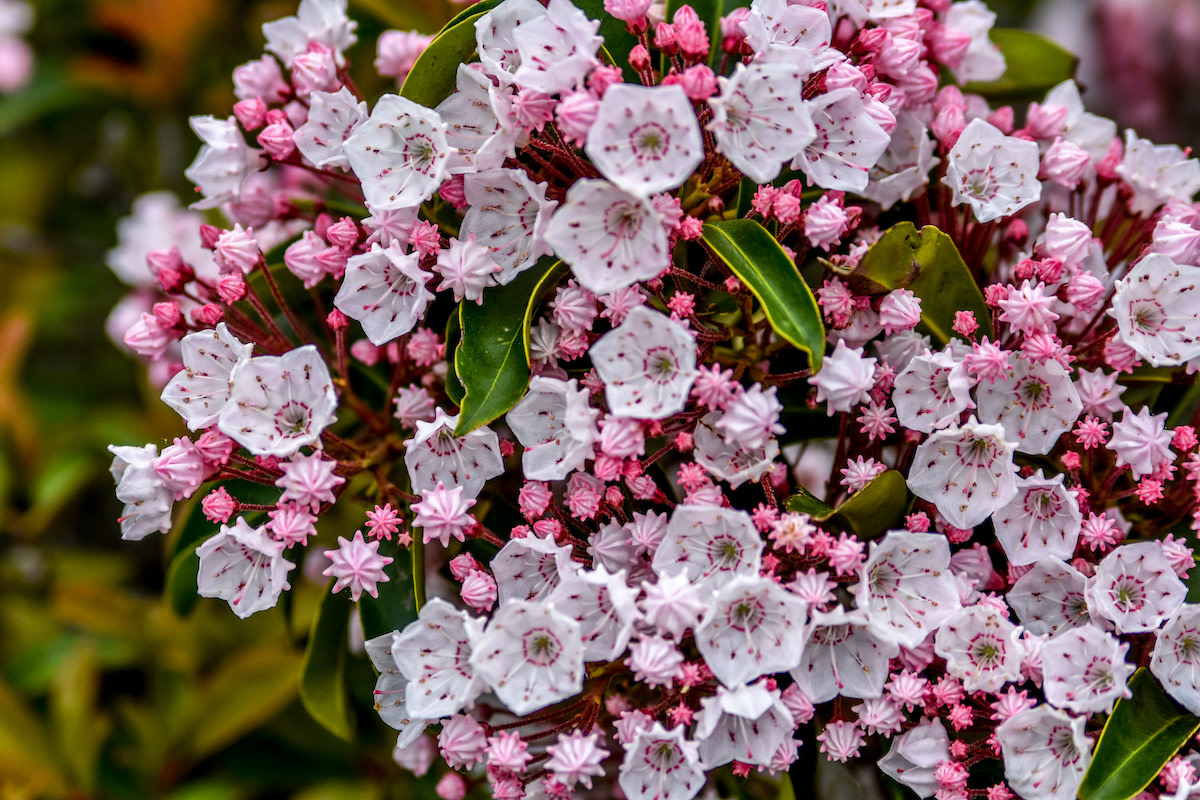Mountain Laurel Guide: How to Grow Mountain Laurel
Written by MasterClass
Last updated: Nov 3, 2021 • 3 min read
If you’re looking for a flowering shrub that attracts pollinators, mountain laurel might be a great addition to your garden.
Learn From the Best
What Is Mountain Laurel?
Mountain laurel (kalmia latifolia) is a broadleaf evergreen shrub that blooms showy, trumpet-shaped red, pink, or white flowers with deep-green leaves. Mountain laurel shrubs are part of the Ericaceae family and are also known by the common names calico bush, ivy bush, and spoonwood. They are native to parts of Eastern North America like Pennsylvania and Connecticut, as well as in Louisiana, Indiana, and the Florida panhandle. Mountain laurel shrubs typically grow up to six feet in height, though there are two cultivars of dwarf mountain laurel (Elf and Minuet) that grow up to three feet in height. Mountain laurel prefers acidic soil, and does not grow well in clay soil.
When to Plant Mountain Laurel
You should plant mountain laurel in early spring, after the last risk of frost has passed, to make the most of its bloom time. At the latest, it can be planted in early summer, but the shrub will start to bloom as early as late spring. Mountain laurel thrives in USDA zones 4 through 9, and prefers cool soil and partial shade. It will tolerate full sun.
How to Grow Mountain Laurel
Mountain laurel is a slow grower, and the quickest way to propagate a new shrub is through rooted softwood cuttings. You will still need to be patient as your shrub grows, but this overview of growing mountain laurel from softwood cuttings is enough to get you started.
- 1. Prepare your cutting. Snip softwood branch cutting from a mature mountain laurel shrub that is about 6 inches long. Remove any leaves from the bottom two inches of the cutting.
- 2. Prepare a container. Fill a small container with potting soil. Opt for a container that has drainage holes in the bottom to encourage proper drainage. Test the soil by pouring water and check that it is draining well.
- 3. Plant your cutting. Dip the cut end of your cutting in rooting hormone to expedite the rooting process. Plant the stem's end one inch deep in the potting soil. Place the container in a place that gets a good amount of sun.
- 4. Water and wait. Make sure that the soil around your cutting stays moist as it develops its roots. Water the cutting frequently. Within about six months, your cutting should develop strong roots, at which point, you are free to transplant it wherever you like—in your garden bed, or in an indoor container.
4 Care Tips for Mountain Laurel
Once your mountain laurel is established, it doesn’t need too much encouragement to keep growing. To set your mountain laurel up for success here are some additional tips for caring for your mountain laurel.
- 1. Fertilize your mountain laurel. Mountain laurel is an acid-loving plant. During spring, make sure to feed your mountain laurel with an acidic fertilizer to encourage growth. Fertilizer that is suited for azaleas and rhododendrons works well for mountain laurel.
- 2. Regulate your waterings. While it is growing, mountain laurel needs moist soil to help establish its root system. However, when the plant is established, it can tolerate some drought conditions. Regularly water your mountain laurel to encourage vibrant blooms.
- 3. Prune selectively. Mountain laurel is a slow-growing plant and it doesn’t require much pruning. However, you can remove dead branches and deadhead spent flowers to encourage new growth.
- 4. Monitor for pests and diseases. Mountain laurel can be susceptible to blights and leaf spots, as well as pests such as whiteflies, scale, and lace bugs. Pruning affected leaves and treating plants with insecticides can help prevent disease and pests. Mulch can also help protect your plants from infection.
Is Mountain Laurel Toxic?
Mountain laurel can be toxic for humans and animals. If a person consumes enough mountain laurel, it can lead to burning lips, burning throat, and possibly death. Mountain laurel can be particularly poisonous for pets such as cats and dogs. Home gardeners should take care when planting mountain laurel if they have pets or children.
Learn More
Grow your own garden with Ron Finley, the self-described "Gangster Gardener." Get the MasterClass Annual Membership and learn how to cultivate fresh herbs and vegetables, keep your house plants alive, and use compost to make your community—and the world—a better place.
